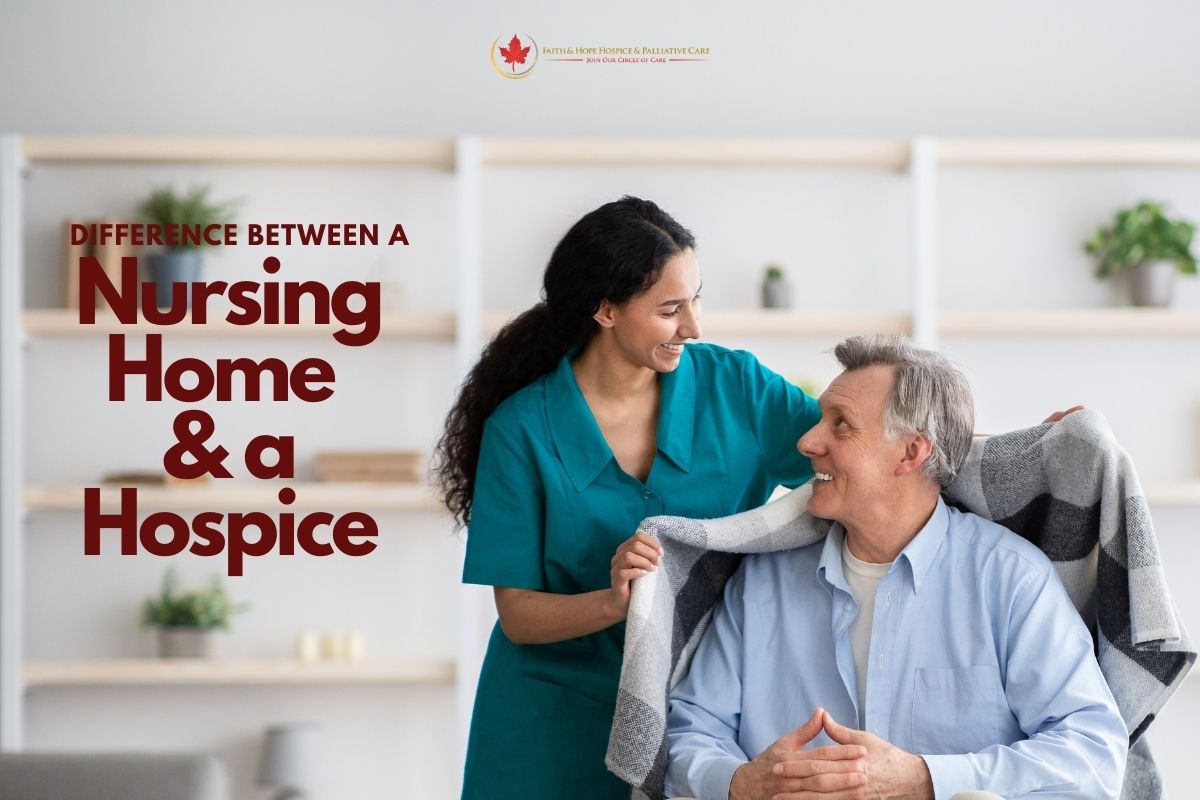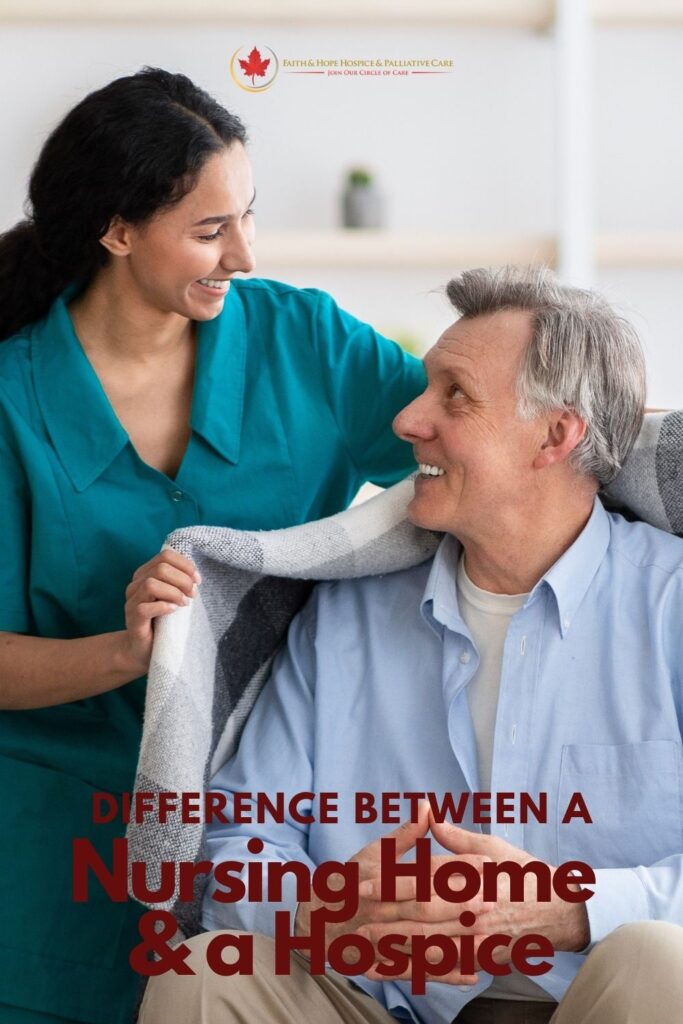
- By: administrator
- Blog
- No Comments
Some people mention to hospice and palliative care Los Angeles professionals that they have a loved one that has been healthy for years and have now noticed that their health has been slowly declining. Perhaps, now their health has taken a sharp turn for the worse, and you may need some help with caring. This is when you may consider some form of residential care, and this decision is never easy.
When someone requires extra care, it is critical to look through all available options. Whether you are thinking about caring for yourself or setting up care for a loved one in hospice Los Angeles, you want to find the most appropriate option. However, you may be wondering if it is time for a nursing home or hospice care? So, which is best for you or your loved one’s situation, and what are the primary differences between the two?

What Is A Nursing Home?
Most of the time, individuals go to a nursing home after having been cared for in some manner at home or after spending time in assisted living. In truth, many people wind up at a nursing home after a fall or the same type of accident that emphasizes the dangers of them living on their own.
Also, the hospice and palliative care Los Angeles team stresses the fact that the person’s health may not be as vigorous and potent, but these people are usually not thought to be “terminal.” All things considered, they don’t suffer from an illness or condition that will end their life in six months or less.
That being said, a person could get hospice care in nursing homes if they have an illness. Normally, a nursing home has a couple of hospice residents and maybe none at all.
So, the Los Angeles team providing hospice and palliative care clarifies what you should expect from a nursing home if you don’t require hospice services.
Typically, nursing home residents need help with everyday activities, such as dressing, bathing, or getting around. Nurses’ aides help with the care, which is available 24 hours a day, seven days a week. Most of the time, residents are not permitted to leave on their own, at least without telling someone. However, nursing homes routinely provide a vast range of entertainment and socialization activities.
Essentially, a nursing home is a residential facility that brings 24-hour care, including personal care, meals, and medical care. It is usually a place to get over a serious illness before going back home or for a person who doesn’t require hospital care but can’t be cared for at home. Although, it is sometimes a permanent living situation.
Keep in mind that not all nursing homes are the same, so it is critical to think about what you desire in a nursing home and find the one that is best for your requirements. In fact, some nursing homes are arranged just like a hospital, while others go for a more home-like environment. Some focus on offering quality meals, while others concentrate on specialized therapy.
When considering nursing home care, it is good to get in touch with each place and inquire about the style of care, the cost, and the waiting lists. Also, if you can, make plans to visit the facility ahead of time and meet with the executive director and/or nursing director.
What Is Hospice Care?
Fundamentally, hospice care is care that intends to ease a person’s pain and suffering in their final months. The focus is on pain relief, compassion, comfort, dignity, and support for the patients and their family members. Hospice care is not about curing an illness or disease.
Many types of hospice care are available, and the options can seem mind-blowing like those in Los Angeles. For instance, there could be:
- Doctor services
- Spiritual services
- Medical services/nursing care
- Medical social services
- Home care aide services
- On-call care
- Inpatient care
- Volunteer care
- Speech, occupational or physical therapy
- Respite care
- Bereavement support
To expand on a few of these, on-call hospice care is when someone is cared for at home by family members or loved ones who have 24/7 access to call someone with questions or request a visit.
Home care aide services can support basic necessities, such as dressing and getting out of bed and helping with laundry, cooking, and other everyday tasks. Pain medications and medical support usually come through medical services and nursing care, and doctors are normally involved in establishing a plan of care, providing prescriptions, and helping manage symptoms as the patient declines.
Hospice care can happen wherever a person lives, whether at home, in nursing homes, or in assisted living facilities. Also, there are Los Angeles hospice-specific facilities, but the aim, if possible, is for hospice to go to where the patient already is.
Hospice Care VS. Nursing Home
There are many primary differences between hospice and nursing home care. Nursing homes are where care is provided, while hospice is a service that can be provided anywhere, including nursing homes. When a patient in a nursing home is diagnosed with a terminal illness, more care is required. The hospice team, like those in Los Angeles, provides their expert end-of-life training to give extra care and support along with the care from the nursing home that is already being provided.
Another distinction between hospice care and a nursing home is that hospice care is covered 100% by Medicare, Medicaid, and lots of private insurance. Although Medicare usually does not cover long-term stays in a nursing home. Revolving around a person’s financial situation, they can pay for a nursing home stay with Medicaid or long-term care insurance.
Even though there are apparent differences between hospice and nursing home care, families don’t have to choose between a nursing home and hospice. If their terminally ill loved one needs 24-hour care from a nursing home, Faith & Hope Hospice and Palliative Care could add that care. Contact us for more information about our hospice and palliative care services here.
